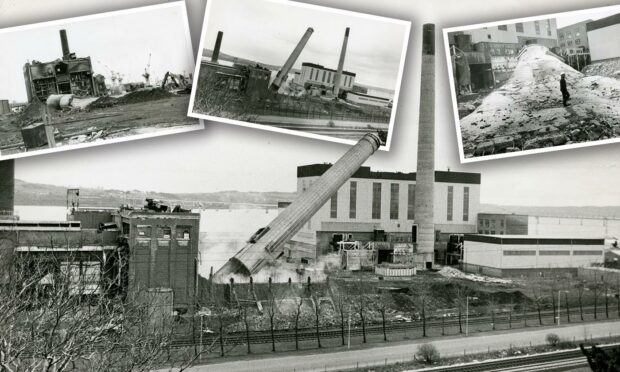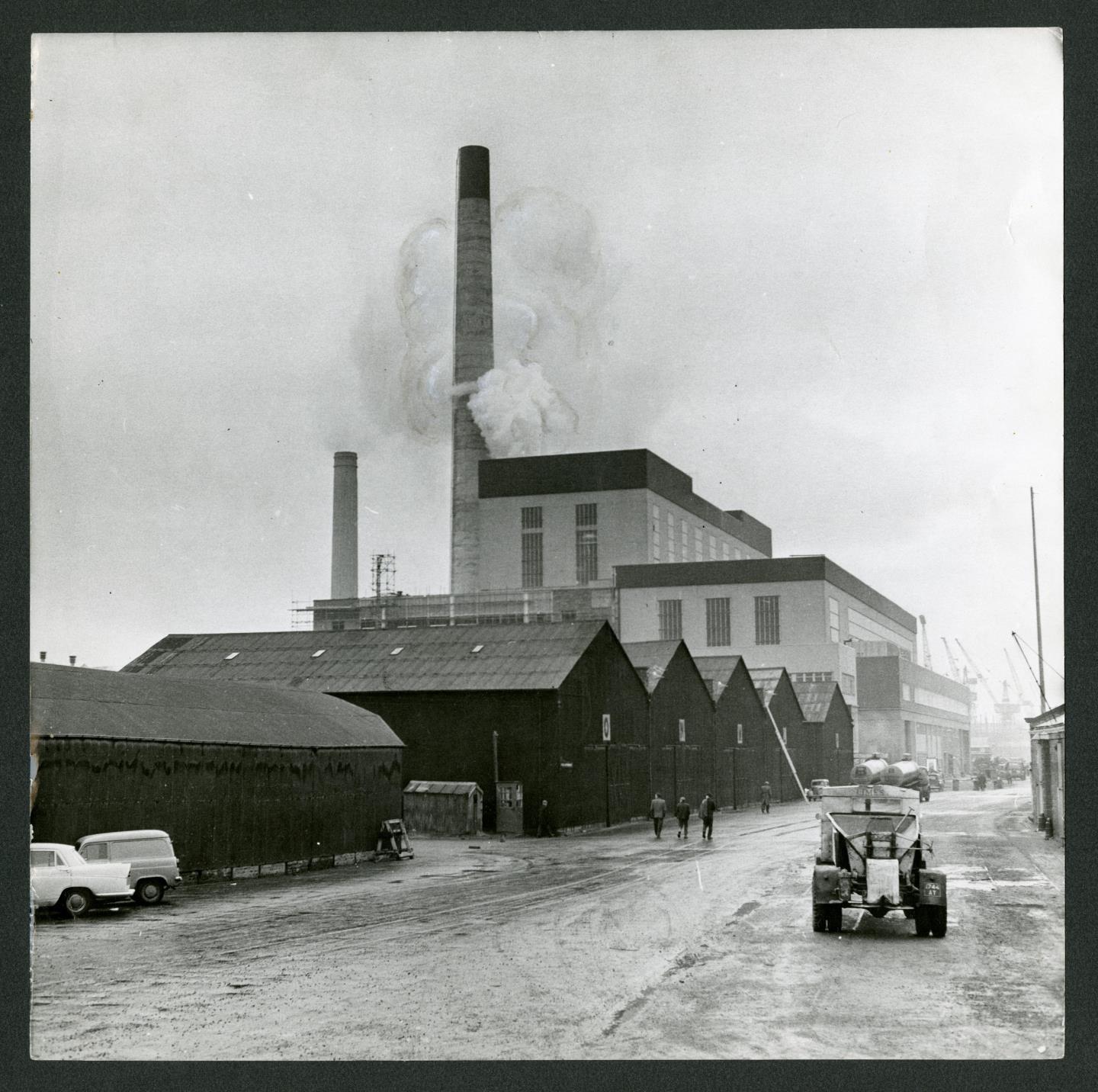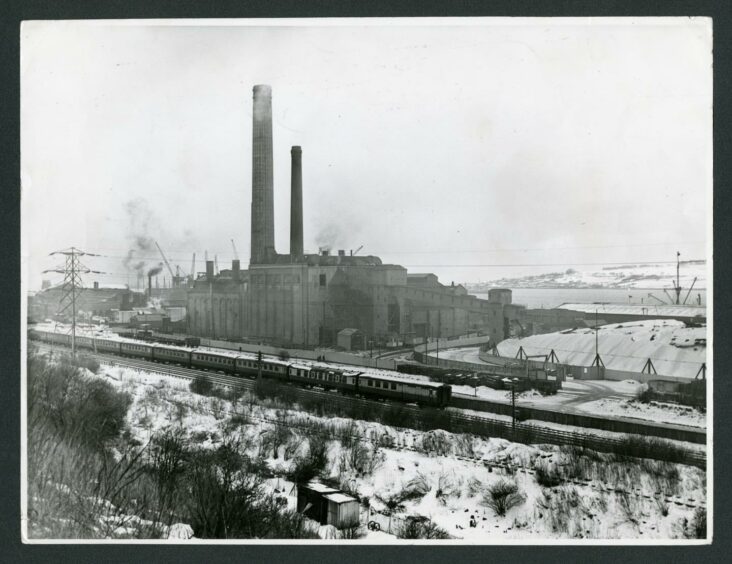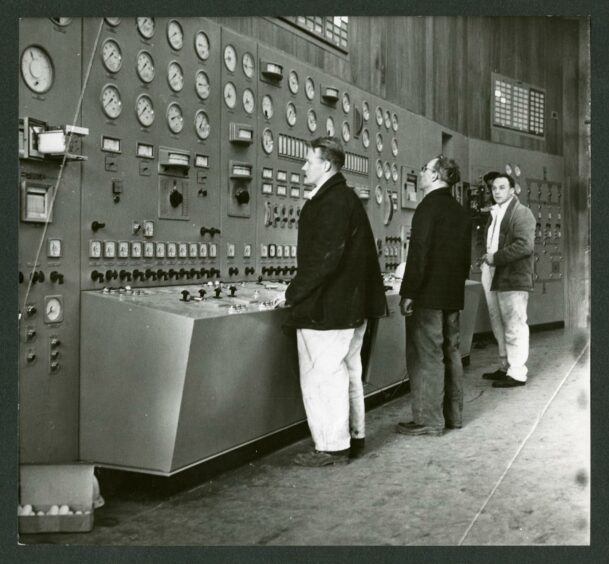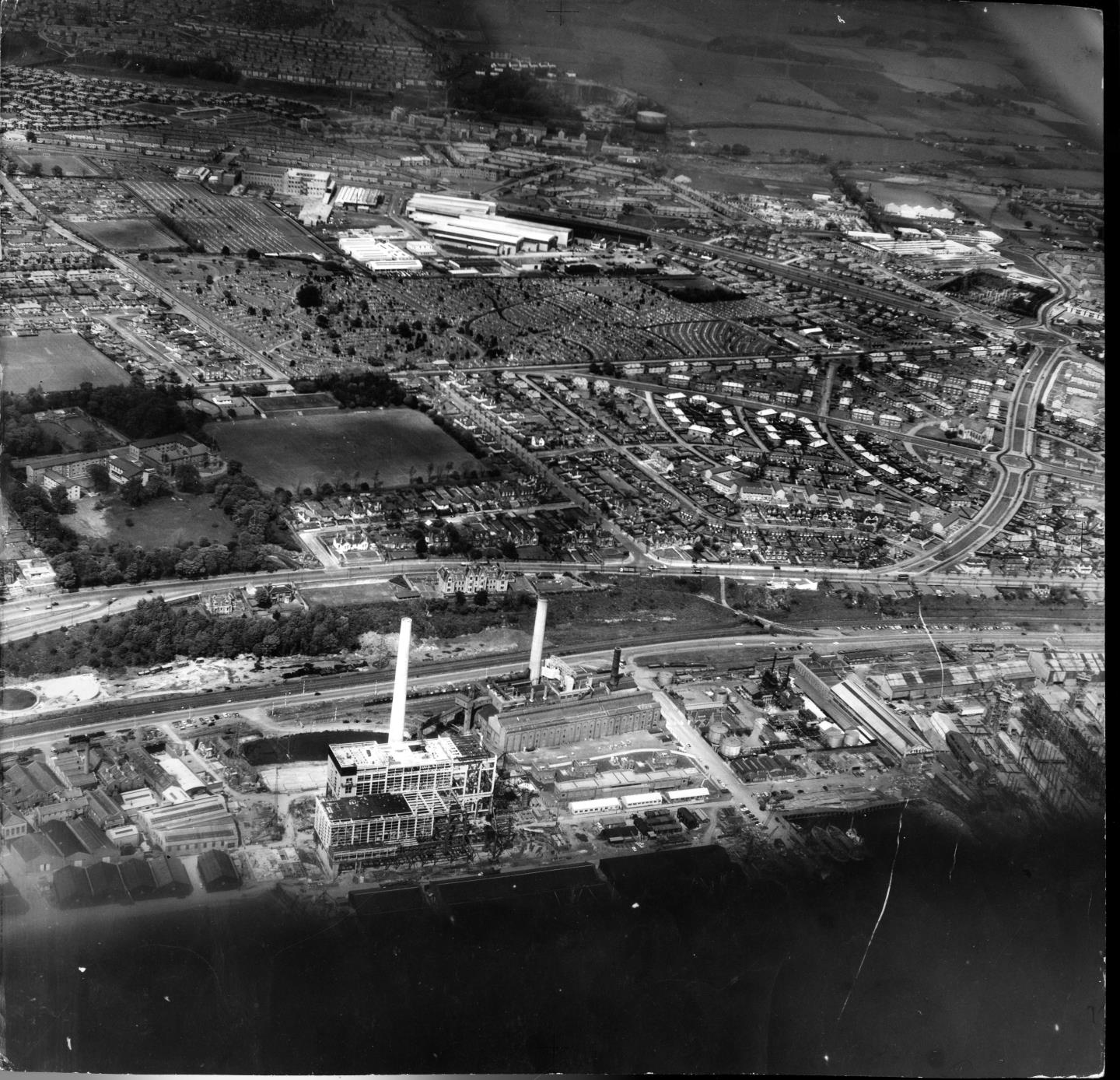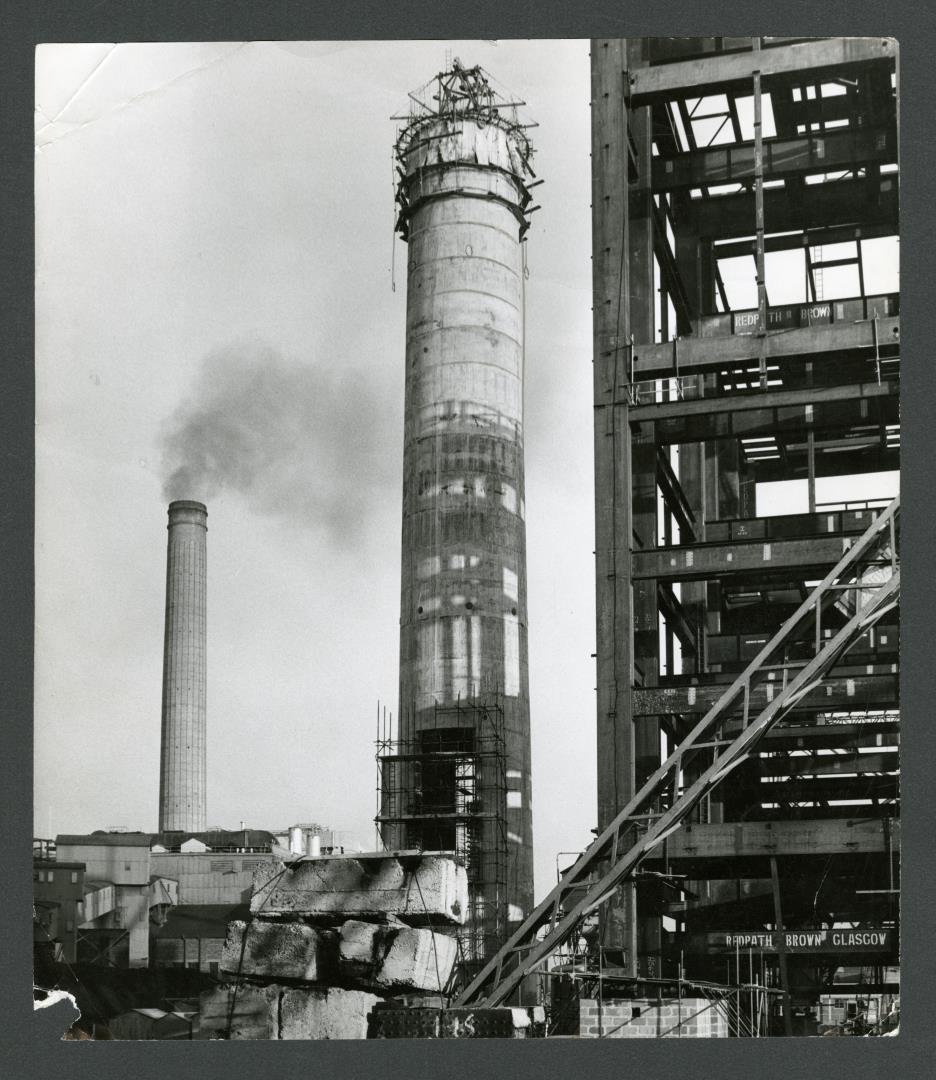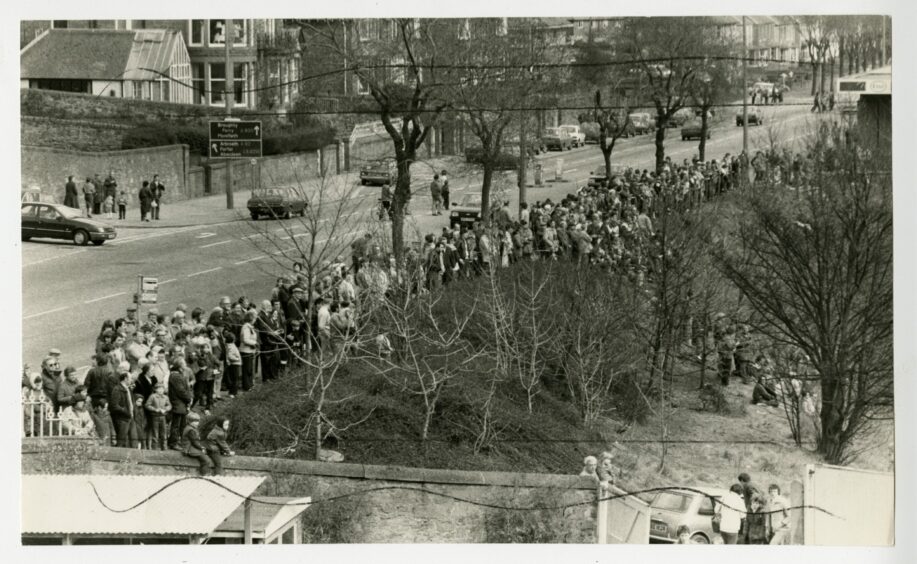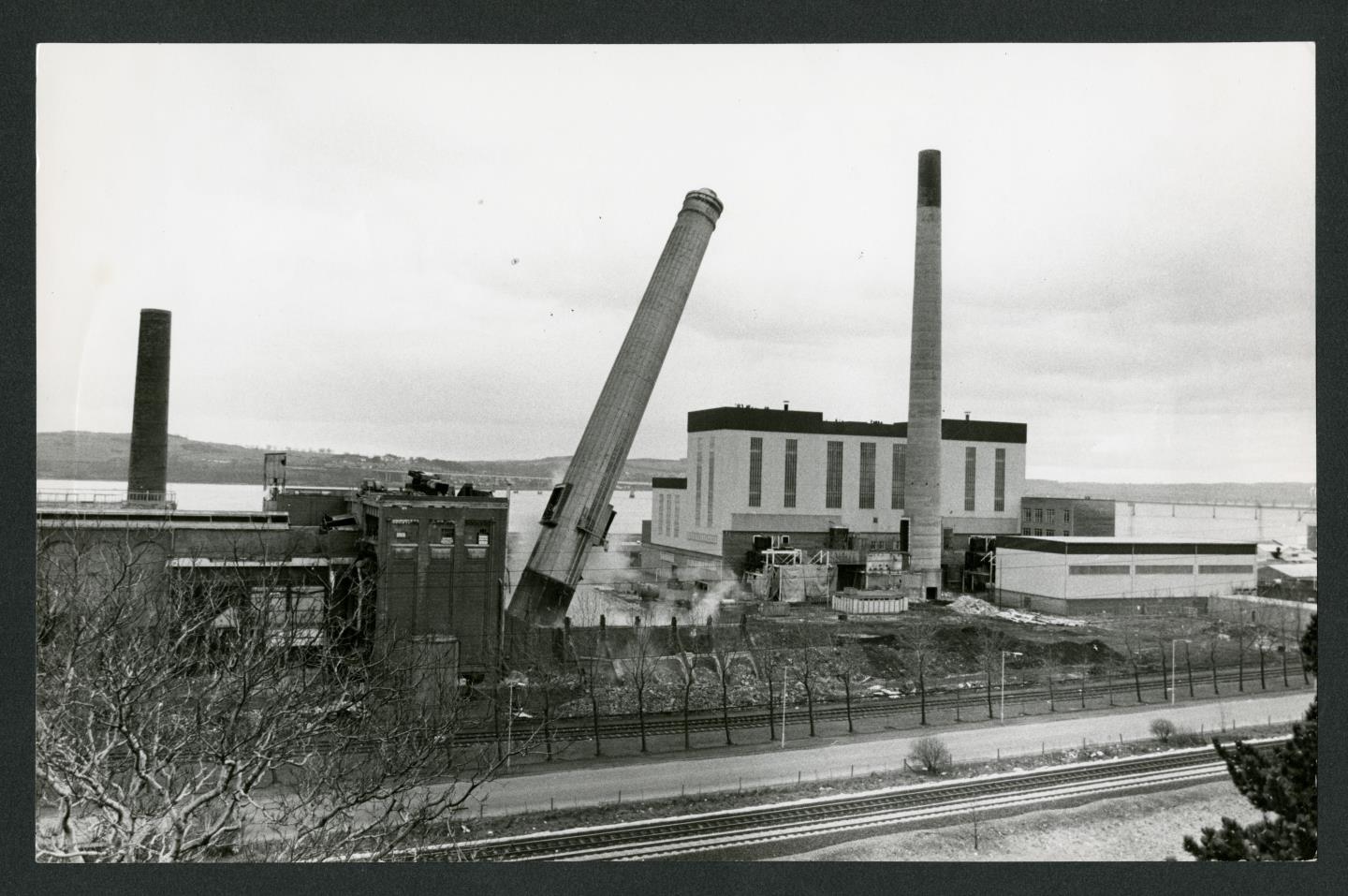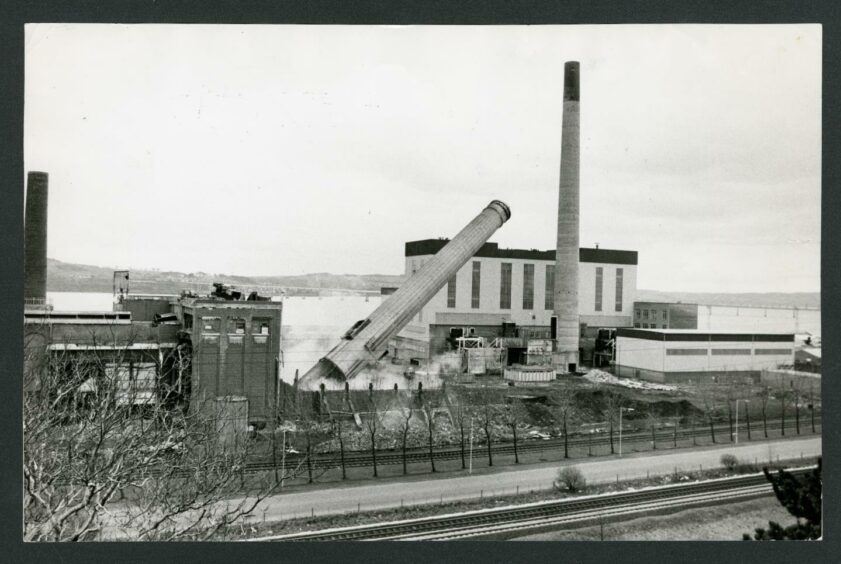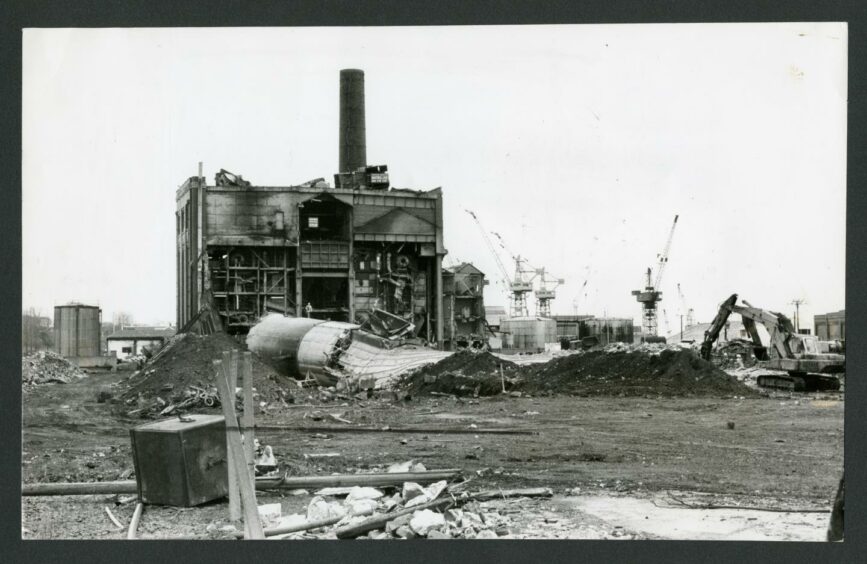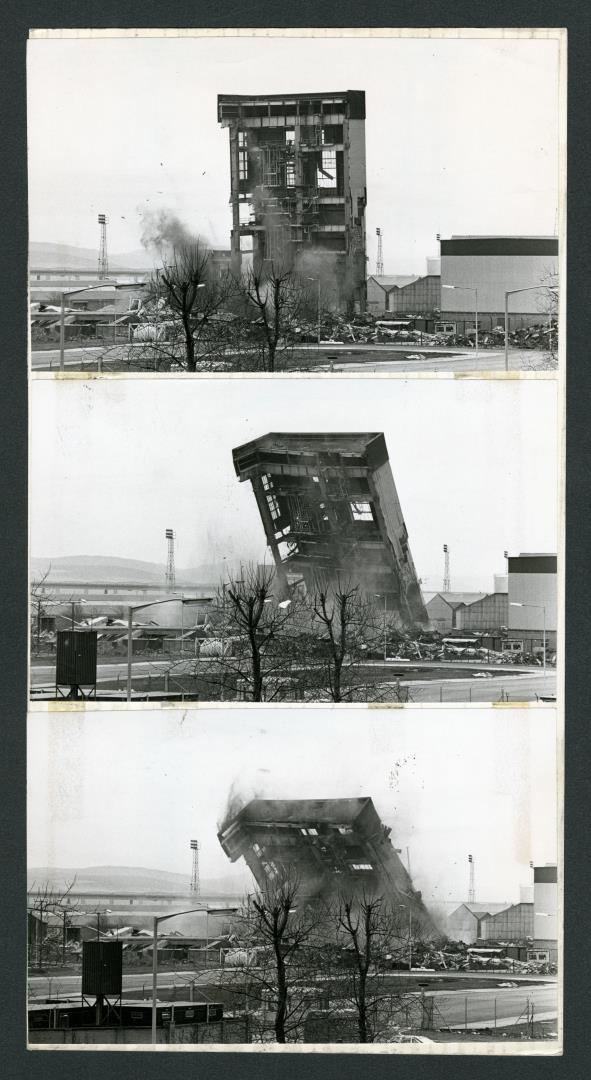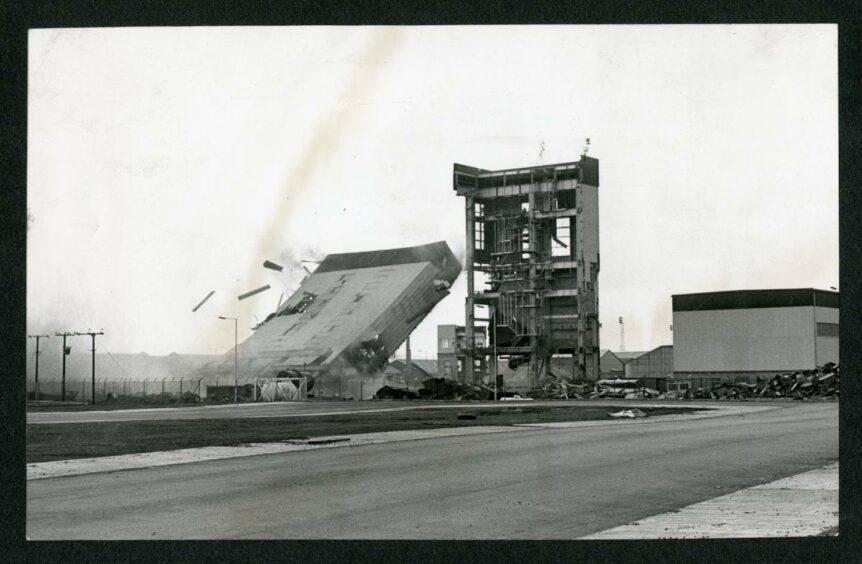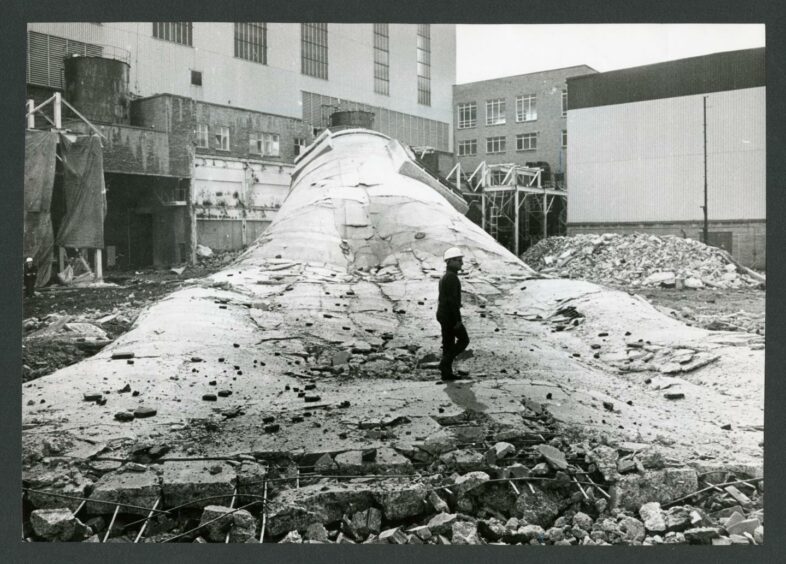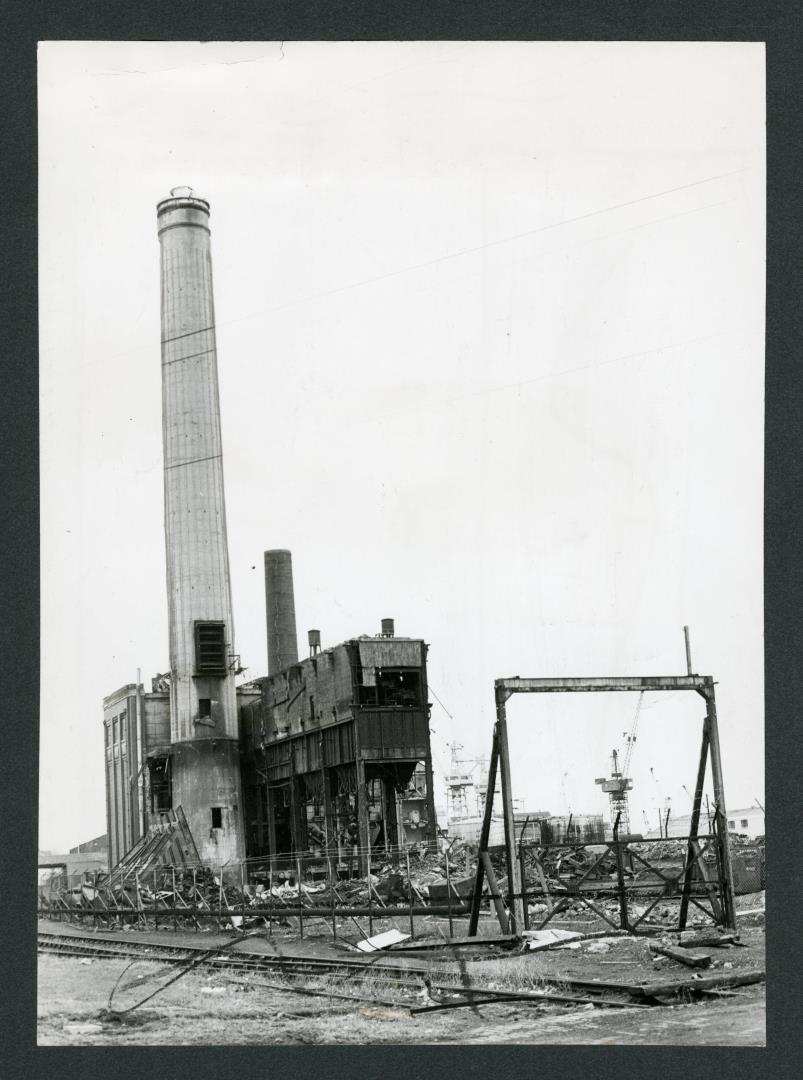In the spring of 1984 the iconic chimneys from the Carolina Port power station fell.
The Carolina Port power station generated Dundee’s energy for much of the last century, with two dominating towers overlooking the harbour.
The power station had served Dundee faithfully for 70 years but was doomed due to rising oil prices and its isolated status.
The site closed in 1982 and eventually, in April 1984, these two towering chimneys – 360 and 250 feet, respectively – were unceremoniously toppled.
Blast from the past…
Carolina Port power station opened in Fish Dock Road in 1908.
The then-new site was much better than the old, being close to the river and ample cooling water, and close to the railway for supplies of coal.
Carolina Port was controlled by Dundee Corporation until the end of the Second World War.
Control of the facility then passed to the new North of Scotland Hydro-Electric Board (NoSHEB).
A new oil-fired unit was built in the mid-1960s to work alongside the city’s original coal-fired plant.
The new facility became known as Carolina Port B, while the original was Carolina Port A.
In December 1965 Carolina Port B was formally connected to the national grid by Willie Ross, Secretary of State for Scotland.
It became fully operational the following September.
In January 1971 NoSHEB announced its plans to also convert the ‘A’ power station – its only coal-fired plant – from coal to oil.
The National Coal Board did not oppose the conversion, as the left-over coal could be disposed of at other power stations.
Meanwhile, Mick McGahey said the National Union of Mineworkers executive had agreed not to object on this occasion in view of the relatively small amount of coal involved.
Despite being an efficient power-generation facility, the writing was already on the wall for Carolina Port with oil prices on the rise.
The A power station closed in 1977.
The workforce was cut to around 50 people by the early 1980s.
The plant was now simply too expensive to run.
The B power station closed in 1982 and demolition work began in 1984.
Carolina Port power station was a well-known local landmark that many people still have fond memories of.
Neale Elder from Dundee Civic Trust remembers the chimneys from his childhood.
He said: “The two big chimneys at the power station could be seen from my grandparents’ house on the Ferry Road.
“One of my earliest memories is of my grandmother taking me in my buggy for a walk down past the power station to the Eastern Wharf, so I could gaze upon the chimneys and cranes at close quarters.
“There were no restrictions on entering the harbour area in those days, even for a woman with a toddler in a push-chair.”
The two Carolina Port chimneys were scheduled to be demolished on April 8 and April 15 1984.
First to go was the chimney at Carolina Port A.
Five kilos of gelignite were packed into holes at the bottom of it.
The honour of turning the key to set off the explosion went to Anne Jackson, the wife of the contract manager who installed the explosives.
Mr Elder was at the demolition and remembers the day vividly.
He said: “When the chimneys at Carolina Port A and B were to be demolished in 1984, I made sure I was there.”
Mr Elder wasn’t the only spectator, as hundreds turned out to watch.
He added: “I found a suitable vantage point at Taybank and set a suitably high shutter speed on my very basic Praktica SLR camera.
“Clusters of other onlookers were standing around, with nearby residents at their windows and in their front gardens.
“First came the warning siren, then the explosive charge, followed by those few seconds in which it seemed nothing was going to happen.
“Then the great stack keeled over, still in one piece, and it was gone.”
All did not go according to plan on April 8, however, when the chimney at the A station was demolished.
The chimney was meant to drop neatly into a prepared trench, but fell at slightly the wrong angle and missed.
Mr Elder added: “Once the dust had cleared, we saw its carcass lying on the ground like a beached whale.”
The following week demolition of the chimney at Carolina Port B attracted even more interest.
Mr Elder said: “I found a space at the Mayfield playing fields to witness the destruction of this mighty structure, which was the same age as I was.
“It was sad (to see it go).”
The final two walls of Carolina Port power station were demolished on March 26 1986.
It took 28lb of carefully positioned explosives to topple the 900 tonnes of masonry.
Experts from the MacWilliam Demolition Company positioned plaster gelatine around the base of each tower in a precision operation that took hours to complete.
But the devastating effects of the blast were visible in seconds.
The extreme walls of the abandoned power station were all that remained to mark the site of Carolina Port.
The west wall, towering 150 feet above Dundee’s dockland landscape, came down just after noon.
The east wall followed shortly after, at 5pm.
By that evening, Carolina Port was gone.
All that remained were memories of the plant that faithfully served Dundee.
Standing in the ruins a few minutes later, Grahame MacWilliam from MacWilliam Demolition said that his workmen would clear away the rubble within a week or 10 days.
“In five or six weeks, there will be a flat site here. You could use it for a bowling green if you wanted,” he quipped.
While Carolina Port was never used as a bowling green, it was the former home ground of Dundee FC from 1894.
The ground was reported as being “a fine well-equipped stadium with a couple of stands” and played host to Dundee’s first international match in 1896.
Dundee decided to up sticks in 1899 after racking up vast debts as a result of diminishing crowds because Carolina Port was simply too isolated.
More like this:
